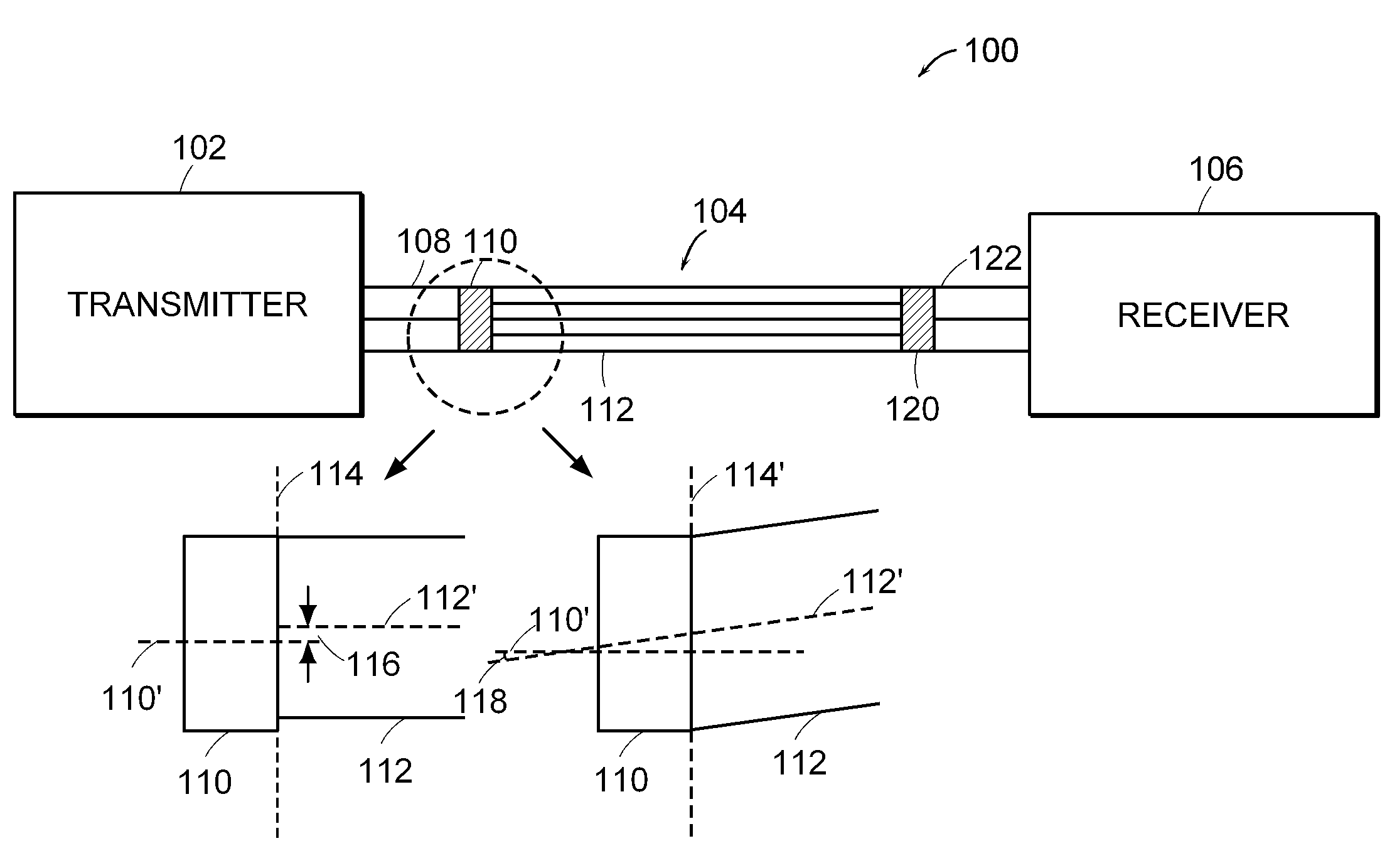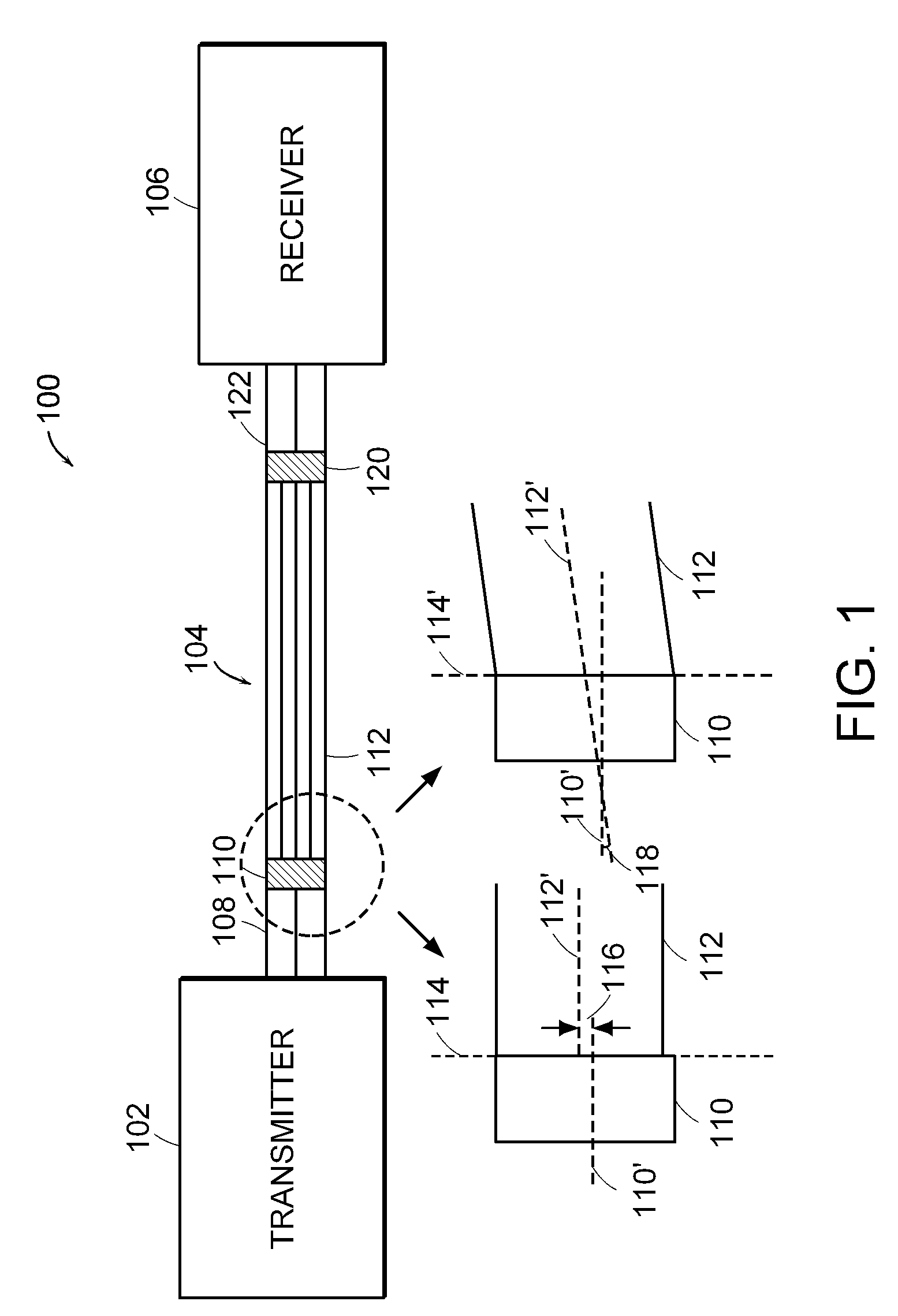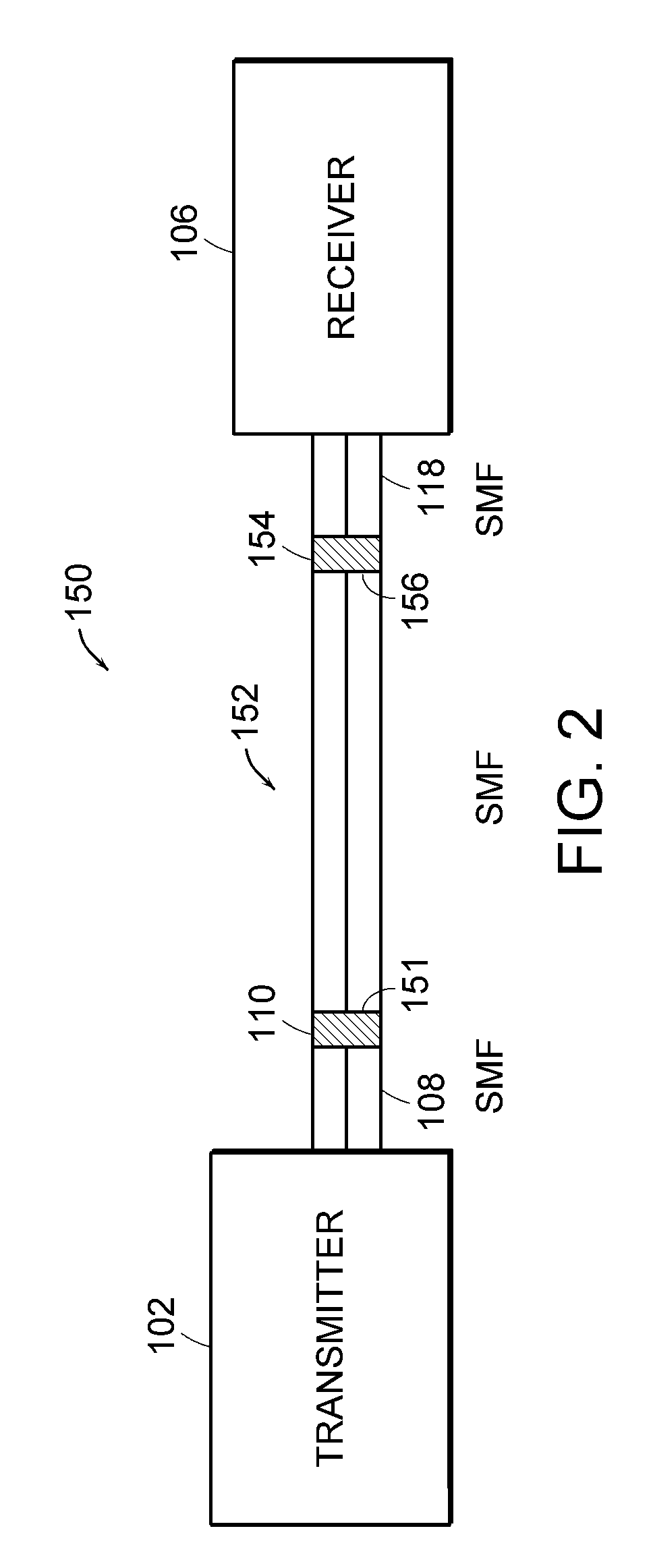Optical fiber transmission system with increased effective modal bandwidth transmission
a technology of optical fiber and effective modal bandwidth, applied in the direction of optical waveguide light guide, multimode transmission, instruments, etc., can solve the problems of low bandwidth-distance products and unsuitable for many state-of-the-art communication systems
- Summary
- Abstract
- Description
- Claims
- Application Information
AI Technical Summary
Benefits of technology
Problems solved by technology
Method used
Image
Examples
Embodiment Construction
[0013]The present invention relates to methods and apparatus for reducing modal noise generation and increasing the effective modal bandwidth of optical fiber transmission systems. The term “modal noise” is described herein to mean the noise penalty at the receiver that is caused by time-varying modal losses in the detected optical signal.
[0014]Modal noise is generated when optical modes of the optical signal propagate through regions in an optical fiber that create mode selective losses (MSL). The term “mode selective loss (MSL)” is defined herein as a loss in a multimode fiber optic cable that results in a non-uniform loss to the modes traveling in the optical fiber. Mode selective losses can be caused by geometrical discontinuities in the optical path, such as geometrical discontinuities caused by physical bends in the optical fiber, fiber defects, and contamination proximate to the optical fiber connector. Mode selective losses can also occur in spatial mode converters or optica...
PUM
 Login to View More
Login to View More Abstract
Description
Claims
Application Information
 Login to View More
Login to View More - R&D
- Intellectual Property
- Life Sciences
- Materials
- Tech Scout
- Unparalleled Data Quality
- Higher Quality Content
- 60% Fewer Hallucinations
Browse by: Latest US Patents, China's latest patents, Technical Efficacy Thesaurus, Application Domain, Technology Topic, Popular Technical Reports.
© 2025 PatSnap. All rights reserved.Legal|Privacy policy|Modern Slavery Act Transparency Statement|Sitemap|About US| Contact US: help@patsnap.com



